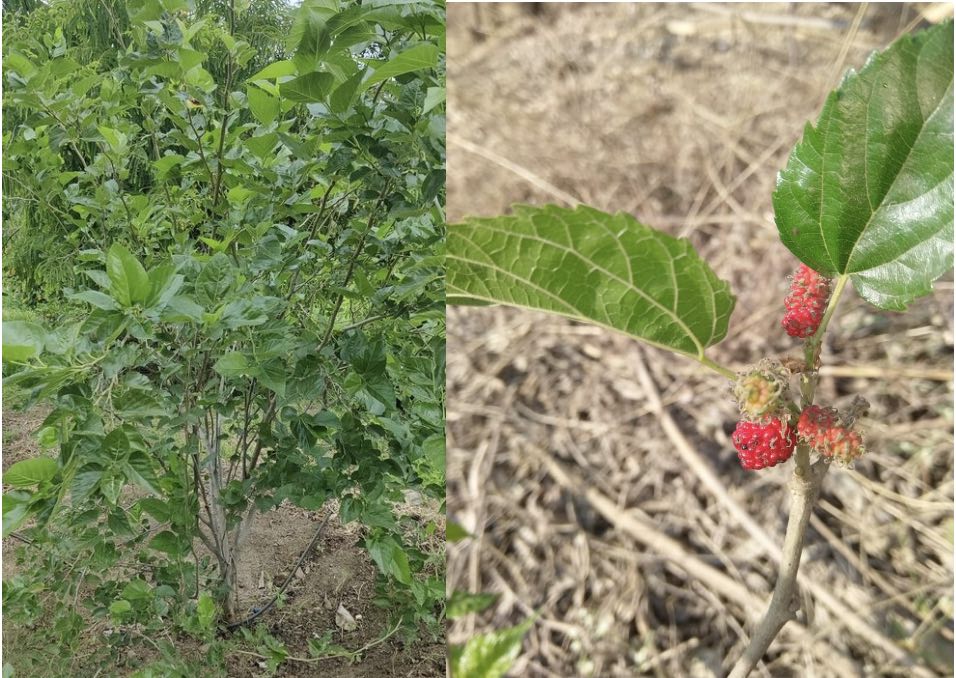Botanical: Morus | Hindi: शहतूत | Marathi: तुती | English: Mulberry
About
The Mulberry tree (Morus) is a deciduous plant known for its lobed leaves and sweet, multiple-fruit clusters. Varieties include Morus alba (White Mulberry) and Morus nigra (Black Mulberry). Native to Asia, it thrives in various climates, growing up to 10 meters. Mulberry trees are cultivated for their leaves, fruit, and timber.Interesting Facts

Medicinal Uses: Mulberry leaves have been used in traditional medicine for their potential to lower blood sugar levels and manage diabetes. They also contain compounds with antioxidant and anti-inflammatory properties, contributing to their medicinal significance.

Environmental Impact: Mulberry leaves, particularly those of the white mulberry, are ecologically important as the sole food source of the silkworm. Mulberry plants can withstand drought, effectively withstand wind, stabilize sand and soil conditions. Mulberry plants therefore are used as an ecological plant species for soil and water conservation. Mulberry is having the ability to remove air pollutants like sulphur dioxide from the atmosphere with the help of its leaves and remove heavy metals and other types of soil pollutants through its roots, this plant species is considered ideal for providing a sustainable environment for future generations and helps in the sustainable development of nature

Food & Culinary usage: Mulberries are consumed fresh or dried and are used in various culinary applications. They are popular in jams, jellies, desserts, and beverages. Mulberries contribute to culinary diversity, providing a sweet and nutritious addition to a range of dishes in different cuisines.
Anandvan Trivia Quiz
Question 1: How am I related to history of money?Answer: During the 13th century, Marco Polo was astonished when he encountered money made from bark of mulberry trees at the court of Kublai Khan in China, where paper money had been in circulation since the seventh century. Kublai Khan’s mulberry bark currency was stamped, sealed and, Polo wrote, “issued with as much solemnity and authority as if they were of pure gold or silver.” It also included a warning to anyone tempted to make their own that all counterfeiters would be put to death. Today, four mulberry trees grow in the courtyard of the Head Office of the Bank of England in London, a reminder of paper currency’s history.

